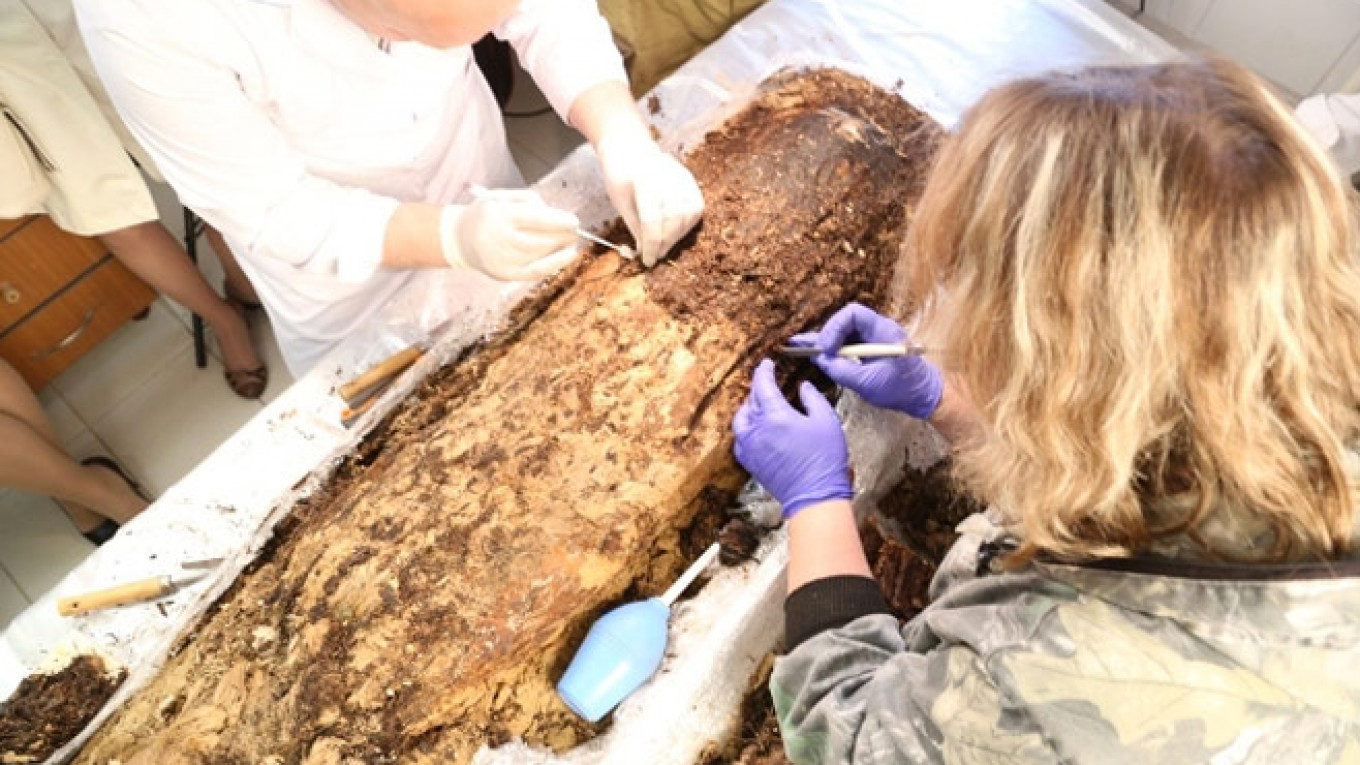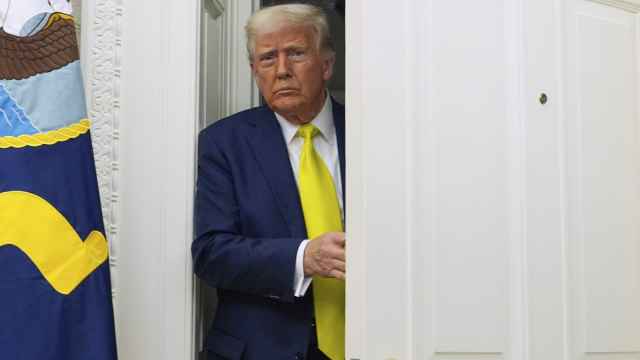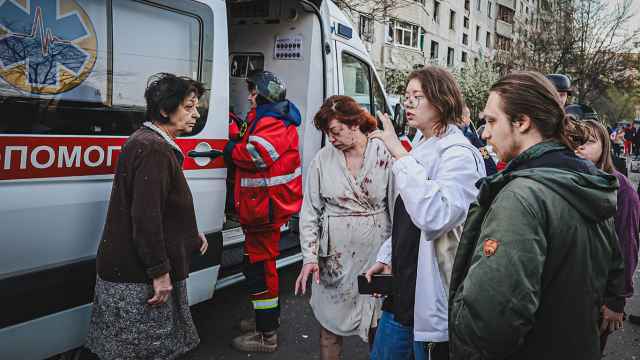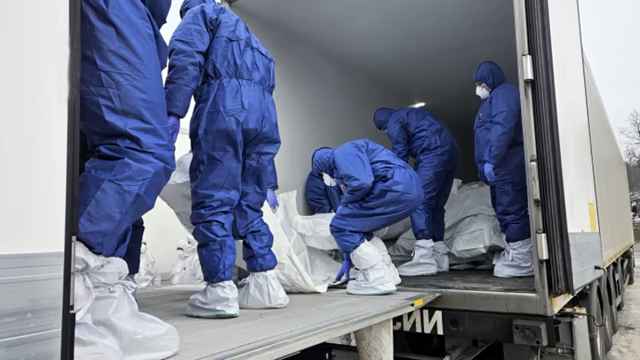Archeologists in the northern Yamal-Nenets autonomous district believe that a cocoon unearthed during a recent excavation contains the mummified remains of a young child, news reports said.
The cocoon, which measured 0.3 meters wide by 1.3 meters long, was discovered this summer near the village of Zelyony Yar, just a few miles south of the Arctic circle, the Interfax news agency reported Saturday.
Experts gathered last week at the I.S. Shemanovsky Yamal-Nenets District Museum and Exhibition Complex to determine what was inside the cocoon before cutting it open, the museum said Thursday in a statement.
Using tomographic technology to build up a picture of what lay inside the cocoon, the scientists surmised that it contained the mummified remains of a child, most likely a boy aged between six and seven years old, the museum said.
The presence of a bronze axe lying next to the body also indicated that the mummy was male. In addition to the axe, scientists found a toy bear and several silver rings inside the cocoon, the museum said in its statement.
After their external examination, scientists began to peel back the layers of the cocoon to examine its internal contents more closely, photographing and video-recording the process, the museum said.
They discovered a child's body resting on a birch-bark bed, wrapped in a blanket of soft fur. Copper plates — covering the child's face, chest, stomach and hips — lay on top of the fur and were bound together by leather cord, the museum said in its statement.
An examination of the mummified remains showed that the child often went hungry or had experienced a serious illness, the museum said. The scientists believe the burial took place in the 13th century but further tests will be needed to produce a more accurate date, it added.
The body is by no means the first to have been discovered near the Zelyony Yar village, where archeologists first started digging in the late 1990s.
In 2000, the archaeologists found their first copper-shrouded mummy — a child with a face masked by copper plates. Three more copper-masked infant mummies were found in 2001, each bound with four or five tiny copper hoops.
Contact the author at j.monaghan@imedia.ru
A Message from The Moscow Times:
Dear readers,
We are facing unprecedented challenges. Russia's Prosecutor General's Office has designated The Moscow Times as an "undesirable" organization, criminalizing our work and putting our staff at risk of prosecution. This follows our earlier unjust labeling as a "foreign agent."
These actions are direct attempts to silence independent journalism in Russia. The authorities claim our work "discredits the decisions of the Russian leadership." We see things differently: we strive to provide accurate, unbiased reporting on Russia.
We, the journalists of The Moscow Times, refuse to be silenced. But to continue our work, we need your help.
Your support, no matter how small, makes a world of difference. If you can, please support us monthly starting from just $2. It's quick to set up, and every contribution makes a significant impact.
By supporting The Moscow Times, you're defending open, independent journalism in the face of repression. Thank you for standing with us.
Remind me later.






